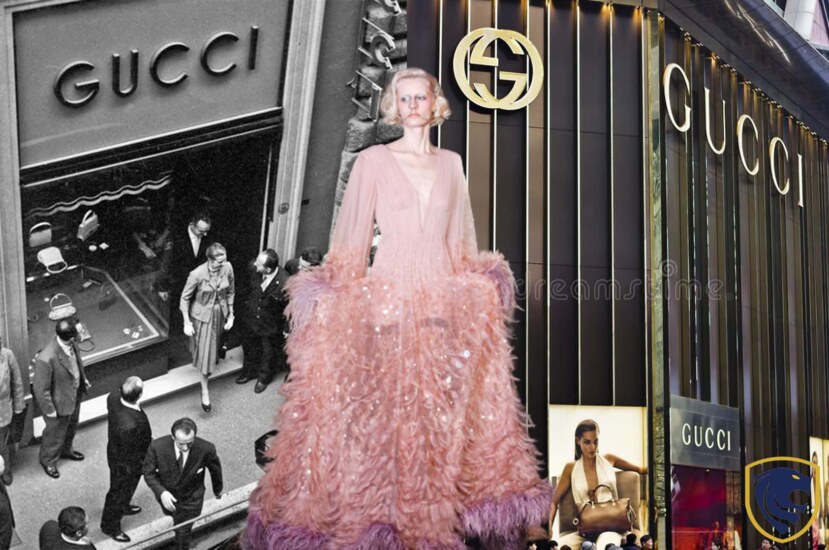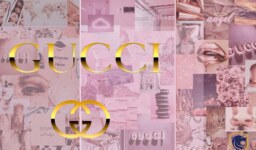Gucci, a brand that is associated with elegance and luxury, has weaved an amazing tapestry through the history of fashion. Gucci’s history, which spans from its modest origins in Florence, Italy, to its current position as a worldwide fashion giant, is a fascinating tale of invention, originality, and enduring impact. Gucci has had a lasting impact on culture and society in addition to changing the face of high fashion with its iconic designs, innovative leadership, and dedication to sustainability. In this historical investigation of Gucci, we examine the brand’s development, its struggles and successes, and the persistent fascination that has captivated fashion aficionados all around the world.
Early Days
In 1921, Gucci was founded in Florence, Italy. Guccio Gucci established the company. He began with a modest leather and luggage store. The exquisite craftsmanship Gucci witnessed in London served as his inspiration. Furthermore, Gucci grew and established a shop in Rome in the 1930s. The company gained recognition for its high-caliber goods. It became known for being exceptional. Bags and accessories made of leather were among Gucci’s hallmark goods. Also, they had the well-known double-G logo on them.

Gucci’s Early days
The 1950s and 1960s saw Gucci’s prosperity continue. Fans included famous people like Audrey Hepburn and Grace Kelly. The brand’s creations were regarded as opulent and fashionable. The 1970s, however, presented difficulties. The corporation was stressed out by family conflicts and court cases. The brand’s reputation suffered as a result.
Expanding Horizons
Gucci opened shops in locations like New York and Paris as part of its international expansion in the 1950s and 1960s. The green-red-green web stripe and its enduring double G emblem came to represent luxury.
During this time period, Gucci unveiled their first handbag with a bamboo handle, a style that is still in demand today. Gucci’s products were made more well-known by stars like Audrey Hepburn and Grace Kelly, enhancing its reputation as a sign of elegance.

Gucci’s expansions
Gucci had internal problems and legal disputes inside the Gucci family in the 1970s, which contributed to a decrease in the brand’s status. But when Tom Ford joined the firm as a designer in the 1990s, a new era started. His original and daring designs gave the brand new life and brought back its stylish status.
Tom Ford’s Leadership
Gucci expanded into new markets under Tom Ford’s direction, including as perfumes and eyewear. Also, the brand adopted a strong, contemporary look that drew in a younger, more varied clientele.
Gucci is currently a major player in the fashion sector on a worldwide scale. Moreover, the brand’s impact extends beyond apparel to include home furnishings, perfumes, and even accessories. Gucci’s dedication to social responsibility and sustainability illustrates its ongoing growth and acculturation to modern principles.

Tom Ford’s Leadership
Gucci has consistently been on the cutting edge of fashion, pushing boundaries and upending norms. Its capacity to change while maintaining its legacy is evidence of both its ongoing popularity and its lasting influence on the fashion industry.
Kering Ownership
The French corporation Kering (previously PPR) bought Gucci in 1999. Through this alliance, the brand was given security and resources to support its growth. Gucci had a tremendous transition while owned by Kering. Alessandro Michele and Frida Giannini, among others, offered new insights to the company. Particularly Alessandro Michele has been instrumental in revamping Gucci’s image, embracing eclecticism, and pushing the envelope in terms of creativity. Gucci reached new heights of popularity thanks to younger customers and fashion aficionados who connected with the brand’s revitalized vision. Collaborations with musicians and artists as well as a strong social media presence further solidified its place in modern society.

Kering Ownership
Kering’s dedication to sustainability has had an impact on Gucci’s methods. The company announced plans to completely eliminate carbon emissions and to eliminate dangerous chemicals from its supply chain.
Gucci’s runway presentations, which were renowned for their lavish settings and varied ensembles, were highly anticipated occasions. Traditional beauty standards were questioned by the brand’s inclusive and varied fashion philosophy, which also added to a larger discussion regarding diversity and representation in the sector.
Counterfeiting Challenges
Gucci has faced a recurring problem with counterfeiting throughout its history in the fashion industry. As the brand rose to prominence and grew to be associated with luxury. It also became a target for imitators looking to capitalize on its good name. Counterfeiters regularly imitated Gucci’s famous designs, such as the GG emblem and the green-red-green web stripe. The market was overrun with imitation goods, which hurt the brand’s uniqueness and resulted in losses.
Gucci has used a variety of tactics to prevent counterfeiting throughout the years. The company has aggressively taken legal action against copycats and individuals who market knockoff Gucci goods. To stop the production of counterfeit goods, this involves bringing legal action and working with law enforcement organizations all around the world.

Counterfeiting Challenges
Gucci has also made measures to inform customers about the dangers of purchasing fake items. The firm has started awareness campaigns and offered instructions on how to identify genuine Gucci items, highlighting the significance of buying from accredited merchants.
Online counterfeiting has grown to be a serious issue in the digital era. Gucci has made investments in digital platforms and technology to track and detect online sales of fake goods. So, a more authentic and safe online purchasing experience is now provided to clients by the company through its official website.
Sustainability Commitment
Gucci has made a significant commitment to sustainability throughout its journey through fashion history. The company has just come to understand the value of social and environmental responsibility in the fashion sector. Gucci has made tremendous efforts to reduce its negative environmental effects. The corporation has established challenging goals, such as turning its supply chain completely off of hazardous chemicals and being carbon neutral. Gucci has invested in environmentally friendly products and methods including employing organic cotton and conserving water during manufacture in order to meet these objectives.

Sustainability Commitment
The brand has given ethical sourcing top priority. Gucci aims to make sure that its supply chain complies with labor laws and human rights regulations. In order to avoid any connections with immoral practices, this includes efforts to track the sources of raw materials and promote fair salaries and secure working conditions for all employees.
Gucci is a supporter of circular fashion and encourages customers to recycle and mend their purchases. In order to increase the lifespan of its products and decrease waste, the company provides repair services and encourages a resale platform.
Gucci today
Gucci is still a recognizable and significant presence in the fashion industry today. The company has undergone a revival under the creative supervision of Alessandro Michele, reinventing luxury fashion with a daring and varied look. The blend of vintage-inspired patterns, lavishly layered materials, and a mingling of several eras and cultures define Gucci’s collections.
Gucci continues to emphasize its dedication to sustainability. The company continues to support circular fashion practices, invest in eco-friendly materials, while moving towards carbon neutrality. Gucci’s supply chain demonstrates its commitment to moral sourcing and labor laws.

Gucci today
The impact of Gucci goes beyond fashion. The company has worked with singers, artists, and filmmakers to promote a variety of cultural and creative endeavours. This multidisciplinary approach has strengthened Gucci’s position as a major cultural force.
Gucci’s visual identity is still readily recognizable because of its classic double G emblem and distinctive green-red-green web stripe. While the brand’s online site offers accessibility to its large selection of items, its boutiques across the world offer immersive and aesthetic retail experiences.
In conclusion, Gucci’s success today is a tribute to the company’s capacity to develop and endure while upholding its tradition of fine workmanship and elegance. It continues to influence the fashion industry and stimulate innovation both inside and outside of it.


